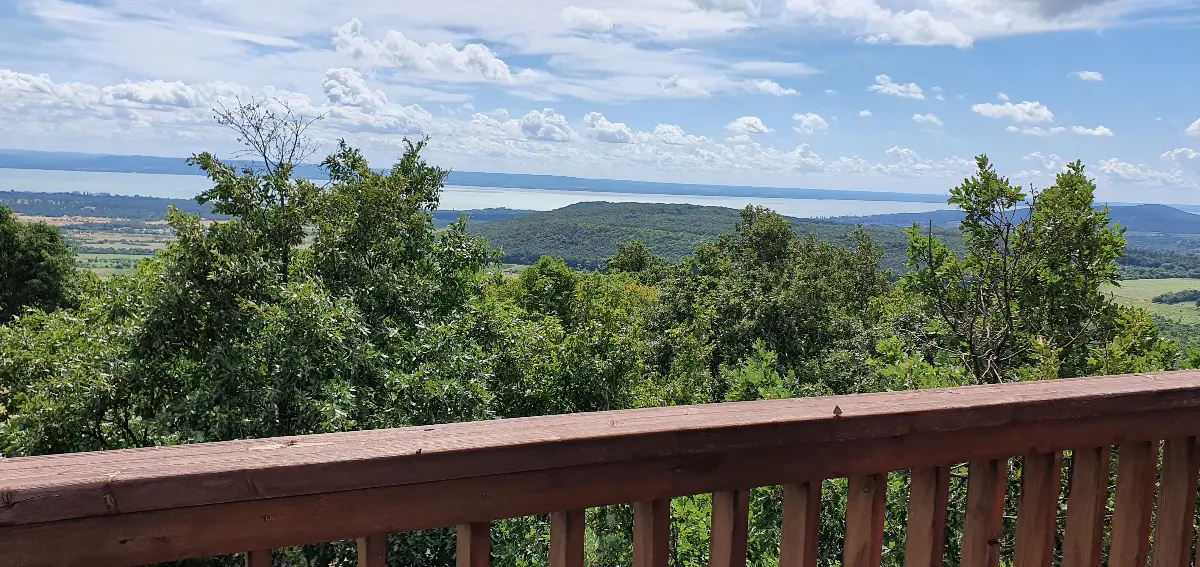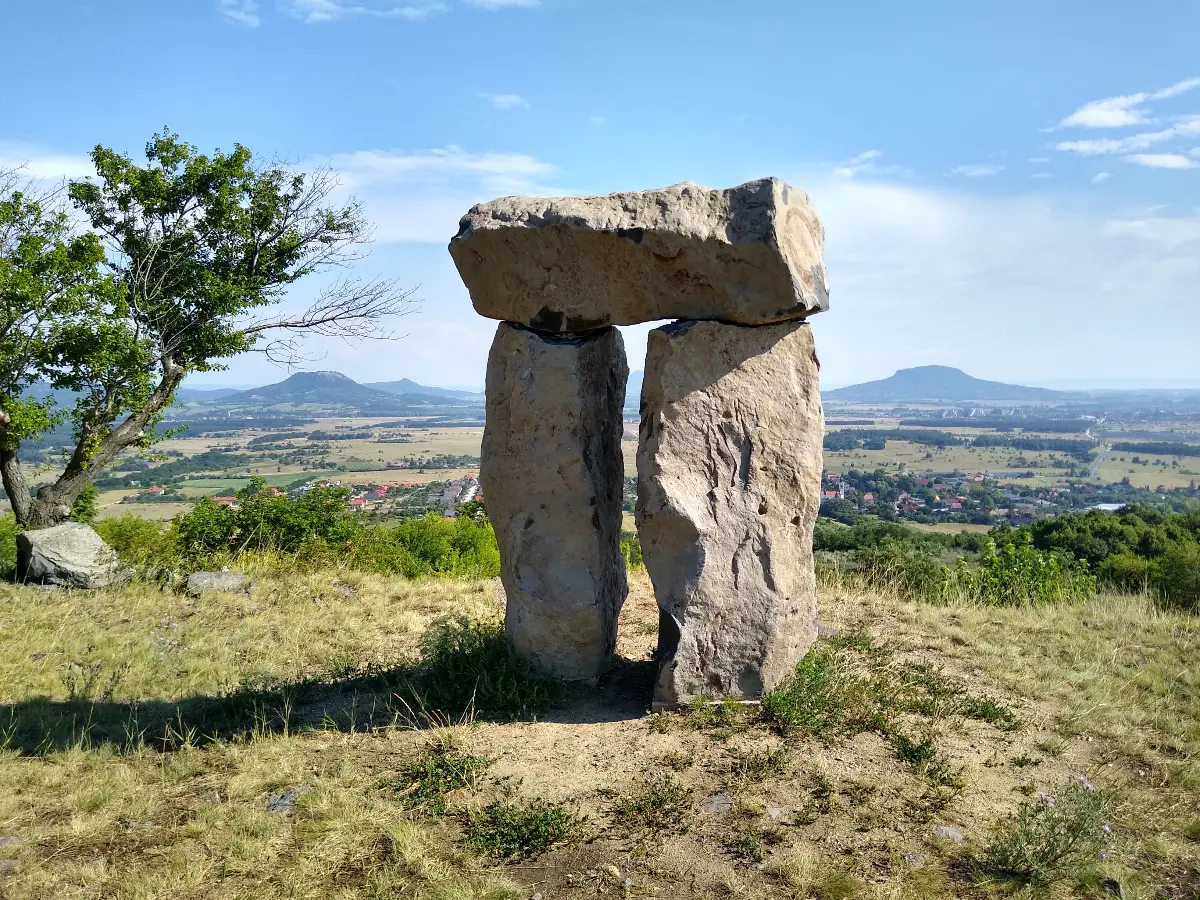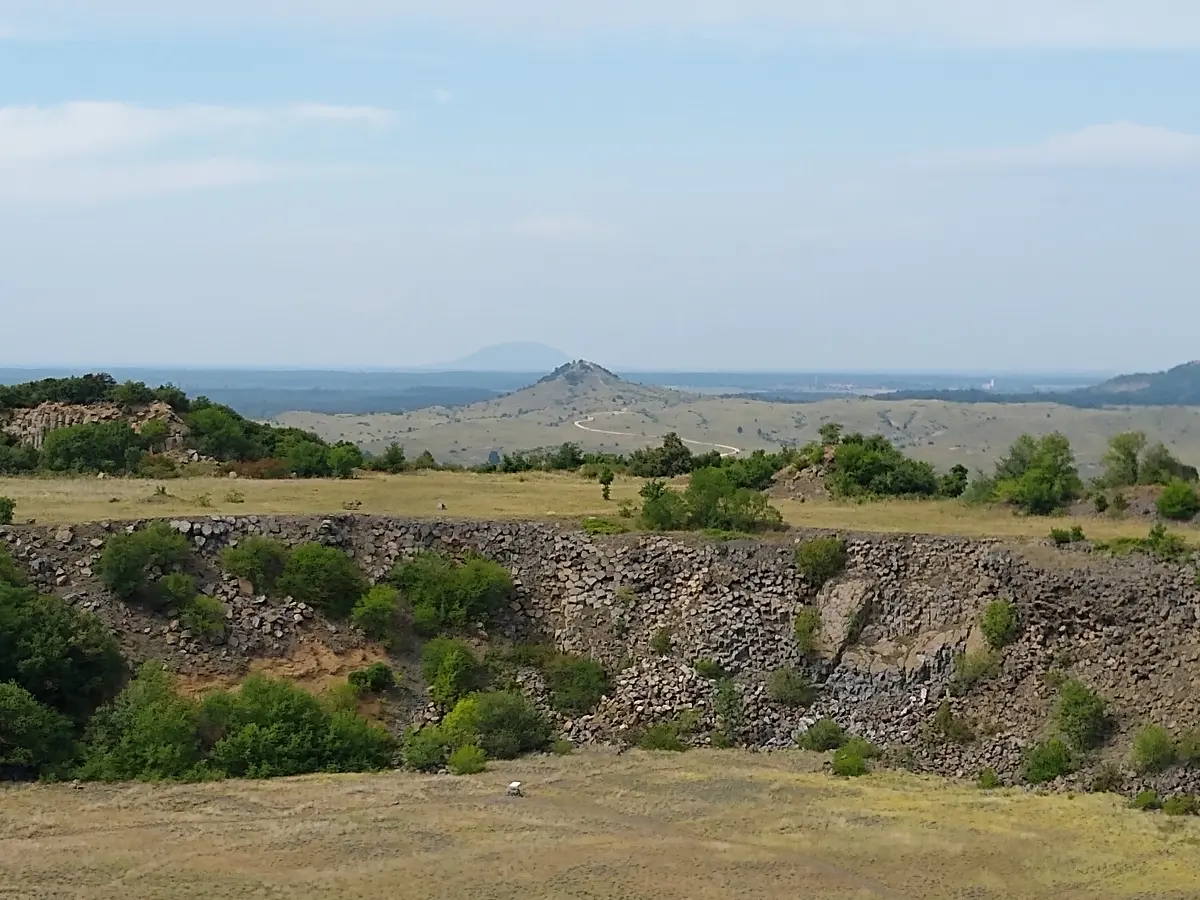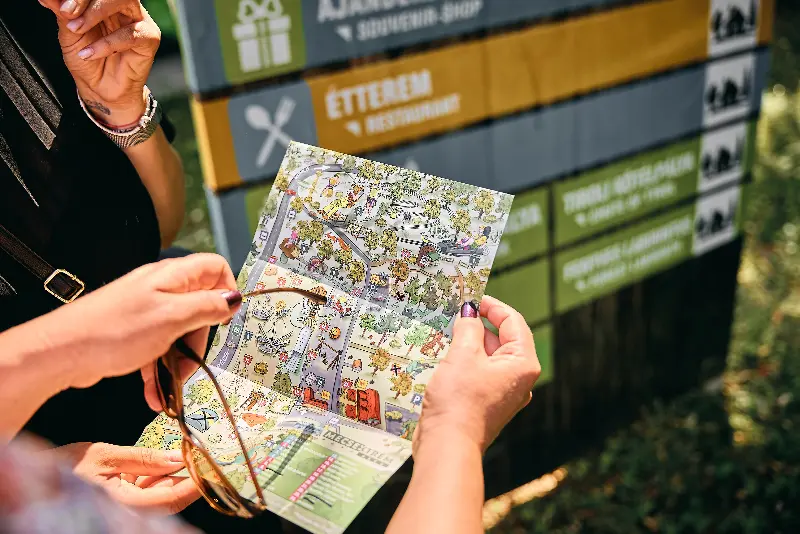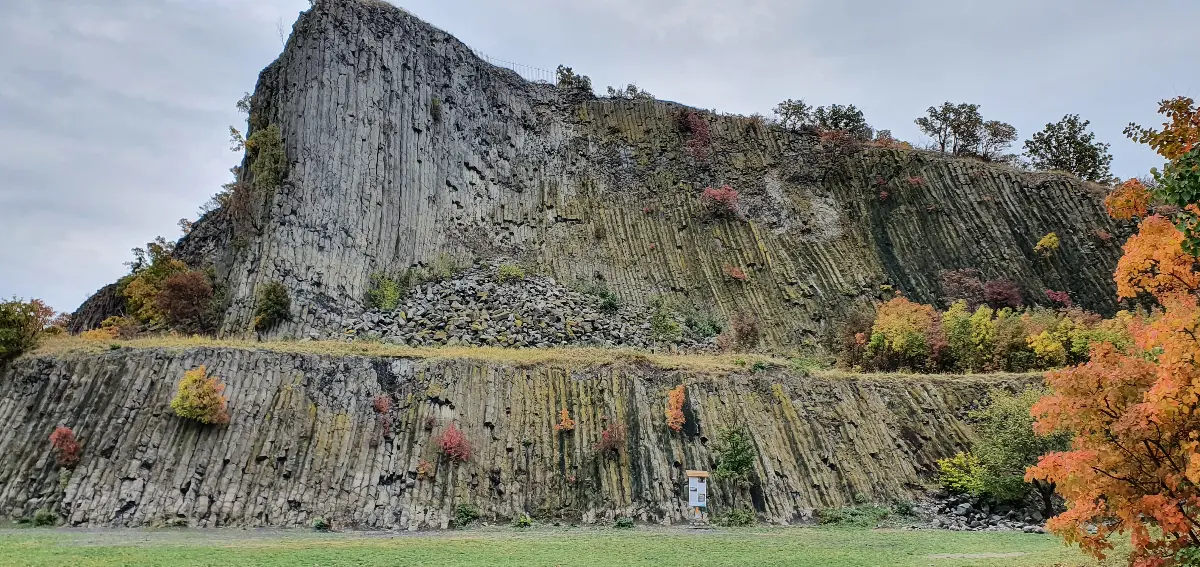
Helyszín címkék:
Where you can walk into the belly of a cooled volcano: the Bakony-Balaton Unesco Geopark
Kilár Boróka
Walking on the flint educational trail of the Halom Hill
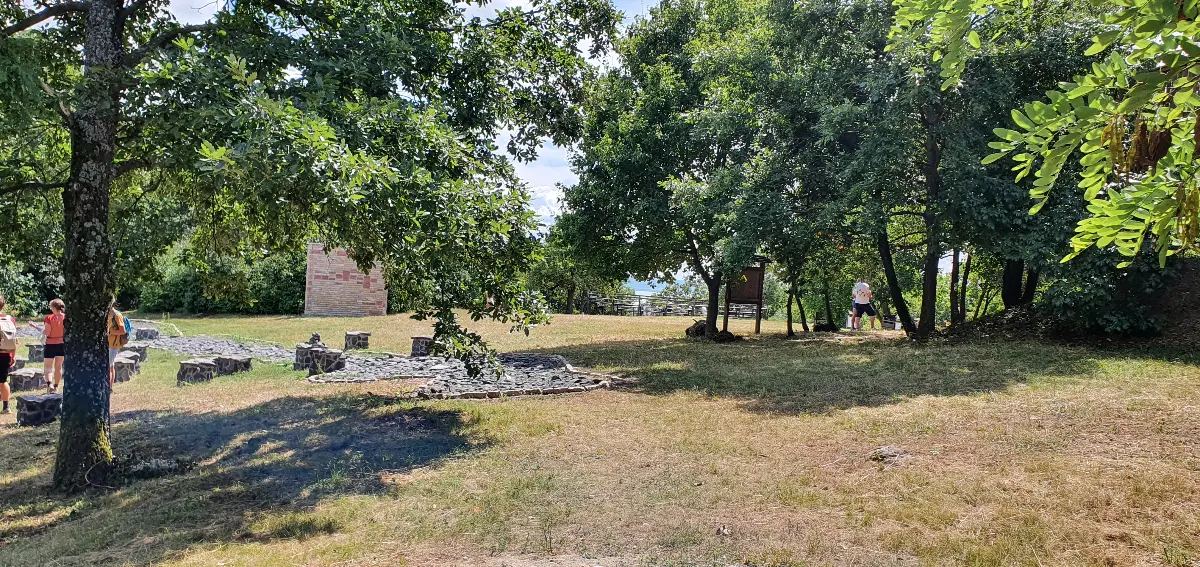
Let's start exploring the world of volcanoes with a lesser-known basalt volcano! The name of Halom Hill, which lies next to Mencshely, at first does not suggest that a cooled volcano hides under it. Its lava cover blends nicely into the landscape. Its discovery is facilitated by a 2 - 2.5 kilometre long nature trail. It is an easy tour that is recommended for all age groups, even families with small children.
At several points along the path marked with a T, you can come across special geological formations and rocks of volcanic origin, and with the help of the signs you can learn about the past of the Balaton highlands - in a geographical sense. At the end of the road, at the highest point of the hill, at 399 metres, the Kossuth lookout awaits us, from which the panoramic view of Lake Balaton and the surrounding mountains is impressive.
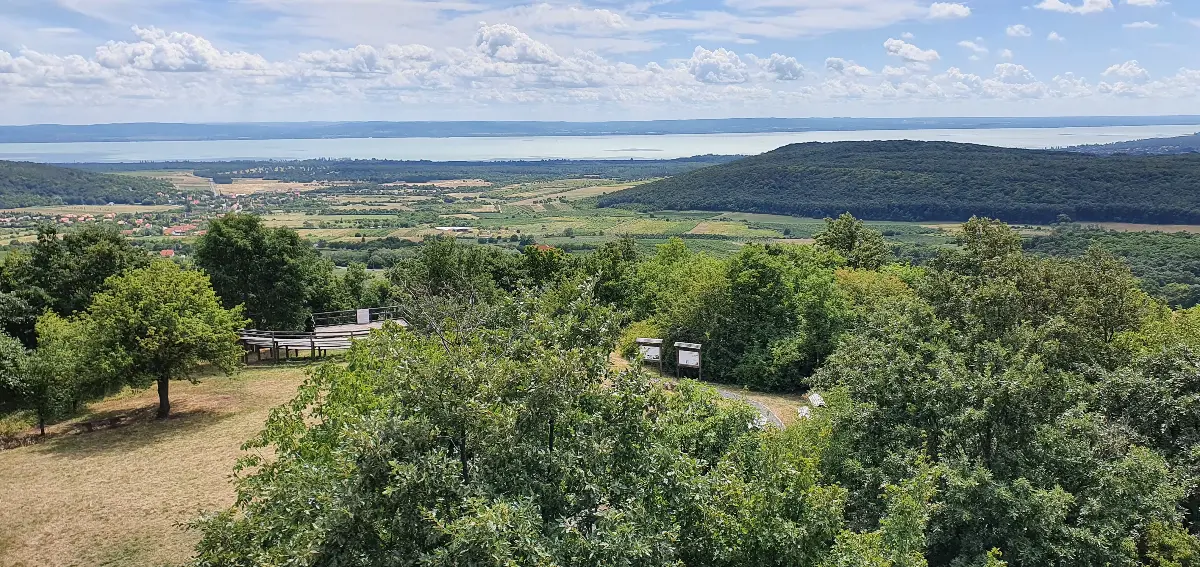
Another attraction of the tour can be reached with a small detour. Walking into the former mining yard, we arrive in the belly of the dead volcano. Experts date the last eruption at approximately 3.25 million years ago, after which the volcano finally rested. The cooled lava became basalt, which was mined in the quarry here. As the human hand went ahead, the interior of the ancient volcano showed itself more and more. By today, nature has largely reclaimed the mine yard, but there are still exciting attractions waiting for us here.
If you can, it is worth visiting the wineries and small villages in the area after the tour! We can also visit Mencshely, Óbudavár to the Budavári Liget, or Dörgicse to the Levendárium and the homely Erika café.
Hegyestű: geological showplace in the belly of a halved volcano

Among the about half a hundred cooled volcanoes in the area, the Hegyestű geological showplace is a real curiosity. Standing in front of the more than 30-meter-high basalt columns in the former mining yard, you will yawn: the lava stuck in the pipe and cooled down is what we are standing in front of. All of this is only possible because, from the 1930s until the 1970s, stone was mined here and half the mountain was demolished. What remained of it reveals the volcanic processes in an extremely interesting way.
On the huge rock wall, you can clearly see how the once hot volcanic magma has cooled down and solidified in columns. This is why it was easy to mine, the stones rolled down into the mine yard almost by themselves. The mining was largely done by hand with picks. A cableway was created for the transport, and then the basalt was transported on stilts for the railway-embankment.
From the edge of the upper mining yard, we can see a magnificent view of the monadnocks of Tapolca. Higher up, from the top of the hill, we can see the whole area. In good weather, you can also see the Kab Hill of the Bakony, which is also a volcanic hill.
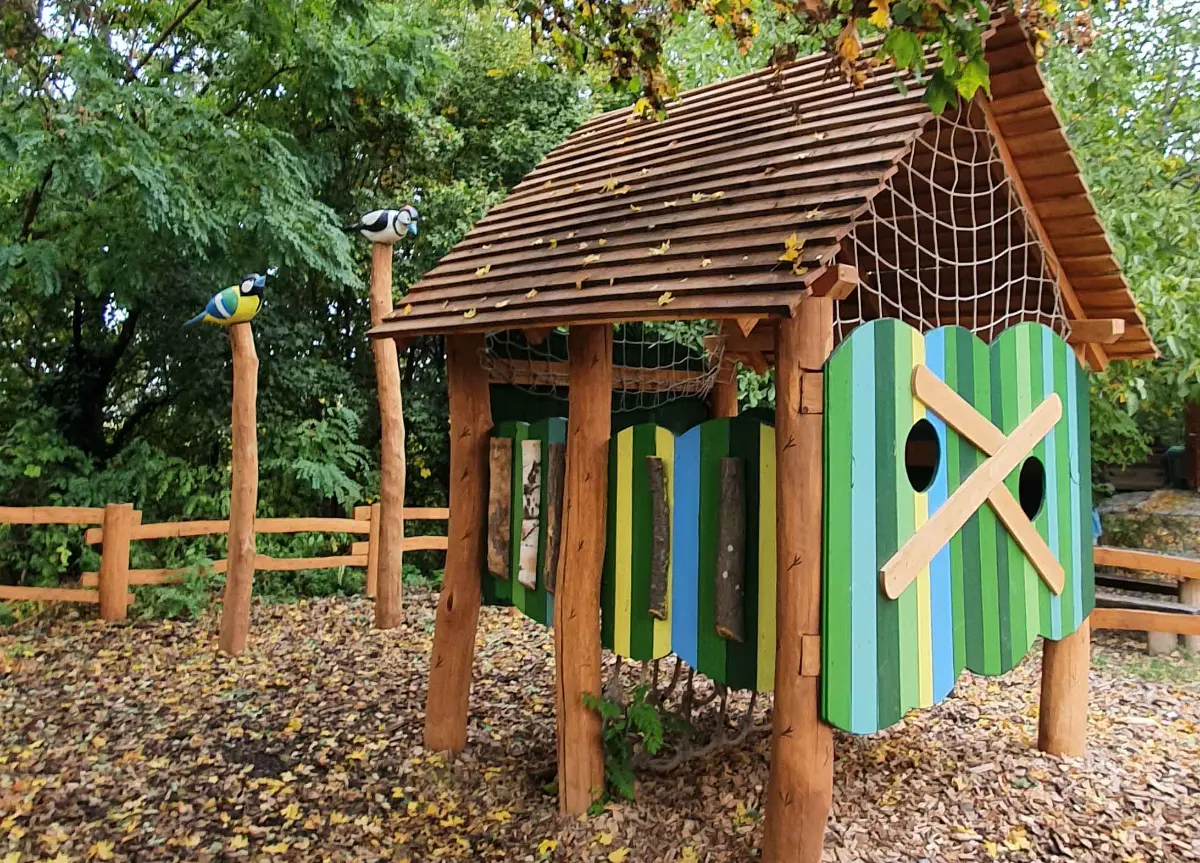
The courtyard below also has plenty of geological history to see. A rock presentation, an interactive exhibition, a buffet and a playground await those interested. The visitor centre and the mining yard are open to the public for a fee, so check the website of the Balaton-Highlands National Park for prices and opening hours!
Haláp, the excavated monadnock
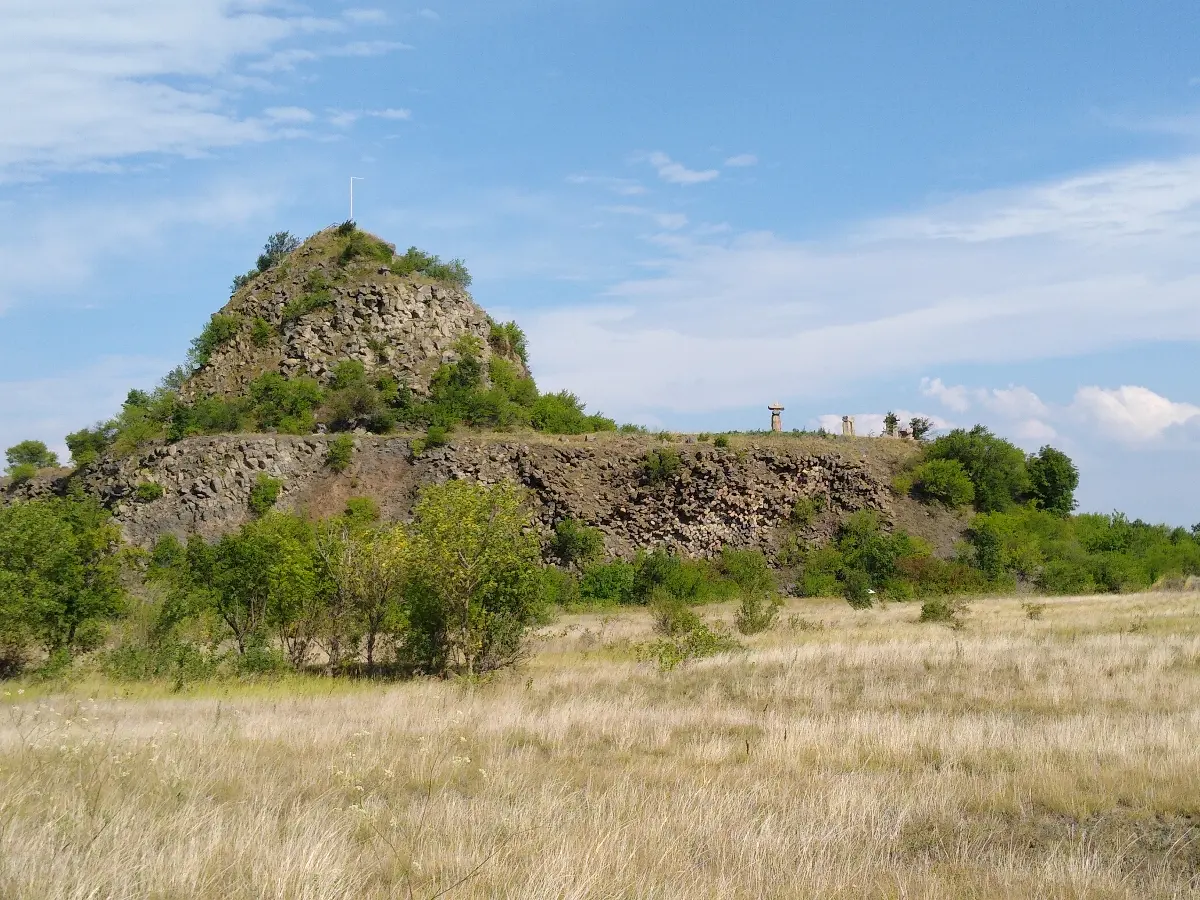
Haláp Hill is located just 20 kilometres from Lake Balaton, in the neighbourhood of the classic monadnocks of the Tapolcai basin. It is considered one of the hidden gems of the Balaton Highlands, which is still known to few people.
It can be seen from afar that this hill is different from the others: its top is almost completely missing. This is the result of decades of intensive basalt mining that took place in the 20th century. Smaller mines were already established by the Romans, and people living in the region also used the stones here for centuries. Then, in the 1920s, intensive mechanized mining began. At first, cobble and carved stone were mined, then in the 1960s a huge amount of stone material was mined as raw material for road and railway construction. While most of the mines on the surrounding mountains were closed in the 1960s and 70s, work did not stop on Haláp. Even in the 1980s, the high-quality basalt mined here was transported - for example to the constructions taking place on Ferihegy II - until the so-called "basalt cap" forming the top of the hill almost completely disappeared.
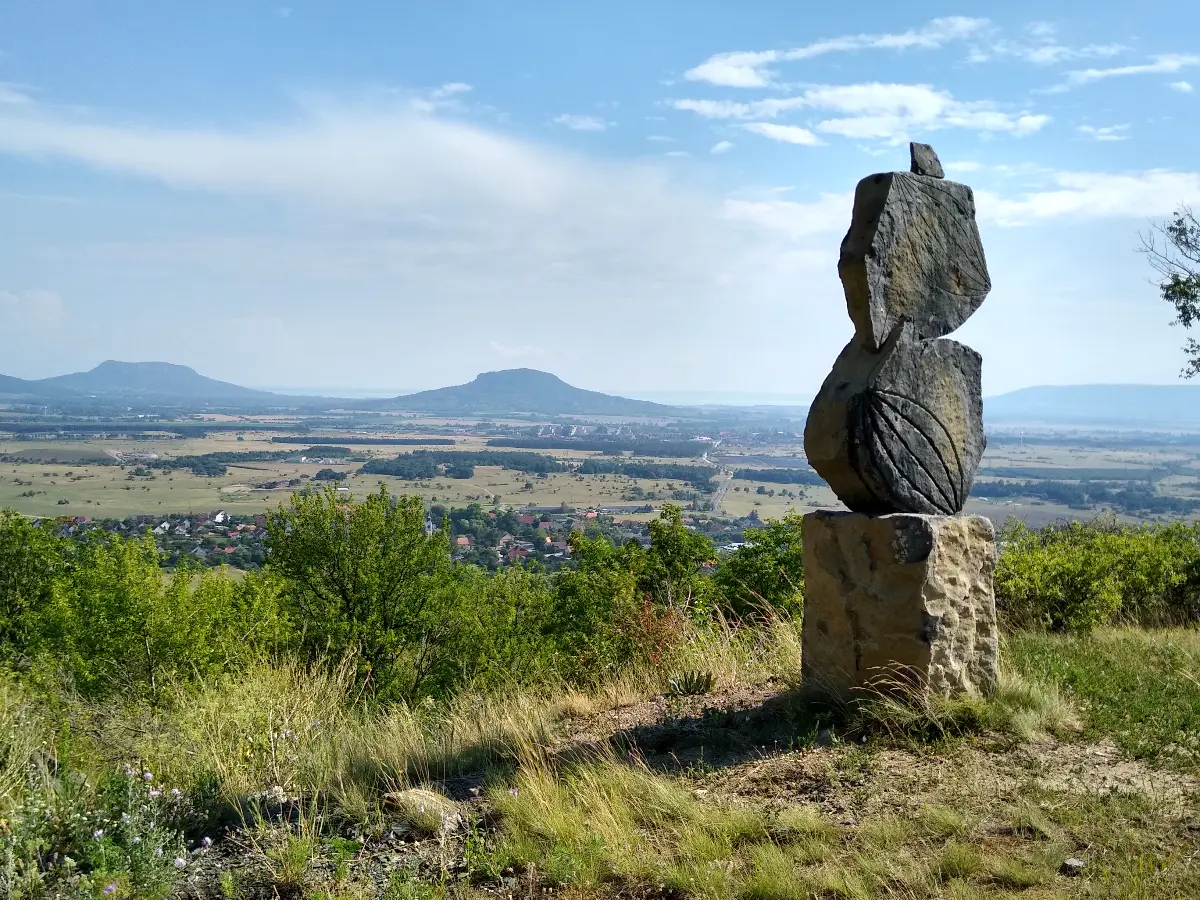
Although it was closed at the end of the 1980s, mining officially ceased on the Haláp Hill only in the autumn of 2015. It was opened to visitors in 2019, so today we can safely walk into the yard of the mine, i.e., the crater of the former volcano. All around, the most diverse basalt shapes colour the landscape. All around, the most diverse basalt shapes colour the landscape. On the edge of the crater, you can walk through the hill using a 3-kilometre, 10-station nature trail. In the recultivated mining yard, we can learn about the history of the place on the information boards. We also find a sculpture park here, where, in addition to the panorama, we can admire the basalt works of sculptors Rhea Marmentini and BALANYI Zoltán. Concerts are also held on the hill in the summer.

